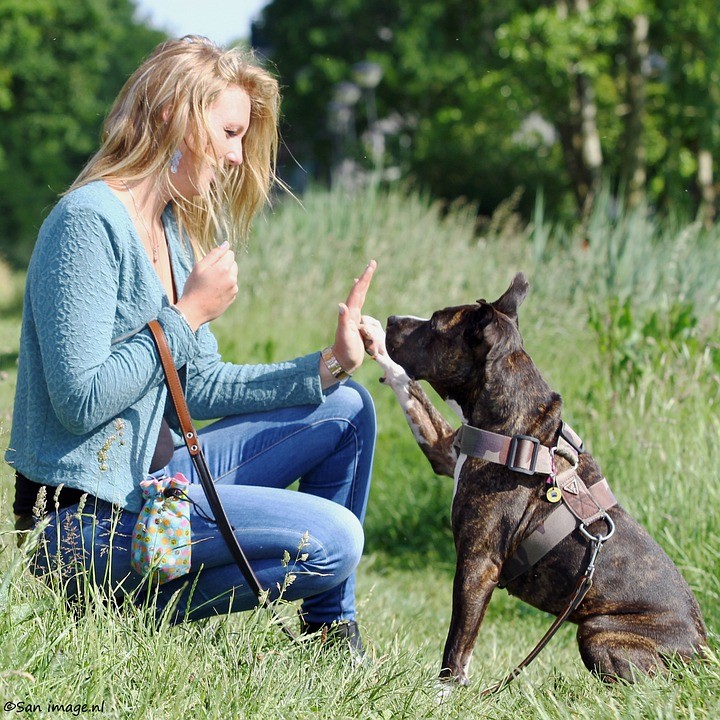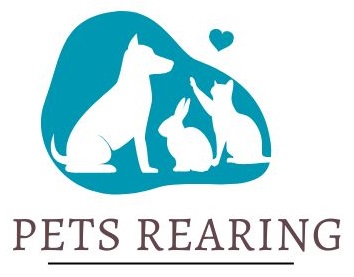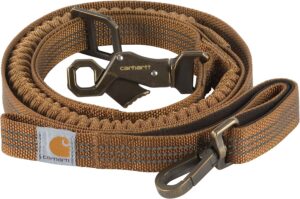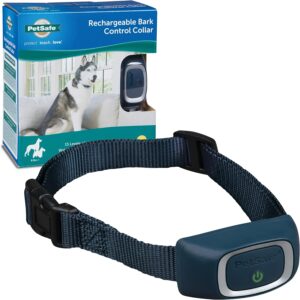
Hi pet lovers, Do you know that Collars and leashes are very helpful for pets for many reasons. A collar is a band made of various materials that is worn or buckled around the neck of your furry friend. Generally, a collar is equipped with a buckle for adjustment and a ring or clip for tying a leash. Here are five valid reasons to use collar and leash for your cats and dogs:
Leash
A dog leash is a tool used to control and restrain a dog’s movement while walking or in other situations. It typically consists of a length of material, such as nylon or leather, with a handle at one end and a clip or clasp at the other end that can be attached to the dog’s collar or harness.
Here are some common types of dog leashes:
-
Standard Leash: This is a basic leash with a handle at one end and a clip at the other end to attach to the dog’s collar or harness. Standard leashes come in various lengths and materials.
-
Retractable Leash: These leashes have a mechanism that allows the leash to extend and retract, giving the dog more freedom to roam within a certain distance. They often have a locking mechanism to control the length.
-
Training Leash: Longer leashes, usually around 15-30 feet, are often used for training purposes. They provide more freedom for the dog to explore while still allowing the owner to maintain control.
-
Chain Leash: Some leashes are made of chain material, which can be useful for dogs that tend to chew through standard leashes. However, chain leashes can be heavier and may not be as comfortable for the owner to hold.
-
Hands-Free Leash: These leashes are designed to be worn around the owner’s waist or over the shoulder, allowing them to walk or run with their dog without holding onto a traditional handle.
When choosing a leash, consider your dog’s size, strength, and behavior. It’s important to use an appropriate leash for your dog’s needs and to ensure that the leash is in good condition to prevent accidents or breakage. Always use a collar or harness that fits your dog properly and is comfortable for them. Additionally, be aware of any leash laws or regulations in your area that may dictate the maximum length or type of leash allowed.
How to leash train a dog
Leash training is an essential skill for both dogs and their owners. Here’s a step-by-step guide on how to leash train a dog:
-
Start Early: It’s generally easier to train a dog to walk on a leash when they are still a puppy. However, adult dogs can also learn with patience and consistency.
-
Introduce the Leash: Allow your dog to sniff and investigate the leash while it’s on the ground or in your hand. This helps them become familiar with this new object.
-
Positive Associations: Associate the leash with positive experiences. You can do this by giving your dog treats or praise when they show interest in or approach the leash.
-
Collar or Harness Familiarization: If your dog is not used to wearing a collar or harness, let them get accustomed to it gradually. Reward them when they wear it without discomfort.
-
Attach the Leash: Once your dog is comfortable with the collar or harness, attach the leash. Let them drag it around under supervision in a safe, enclosed area.
-
Short Walks: Start with short walks inside or in your backyard. Allow your dog to explore while you hold the leash loosely. Use treats and praise to reinforce positive behavior.
-
Positive Reinforcement: Reward your dog when they walk beside you without pulling. Use treats, verbal praise, or toys to reinforce the behavior you want.
-
Stop and Wait: If your dog starts pulling, stop walking. Wait until they come back to your side before continuing. This teaches them that pulling won’t get them where they want to go.
-
Change Directions: If your dog pulls, change your direction abruptly. This helps your dog learn to pay attention to your movements and stay close.
-
Consistency is Key: Consistency is crucial in leash training. Use the same commands and rewards consistently to reinforce positive behavior.
-
Gradual Exposure: Gradually expose your dog to different environments, distractions, and types of terrain. This helps them generalize their leash training skills.
-
Be Patient: Leash training takes time, so be patient and understanding. Celebrate small successes, and don’t get frustrated if progress is slow.
Remember that every dog is unique, and the training process may vary. If you encounter difficulties or if your dog has specific behavioral issues, consider seeking advice from a professional dog trainer.
Conclusion
To be in nutshell, collars and leashes are essential article for pets‘ safety, identification, and control. It is essential to choose the right collar and leash suitable for the pet’s size, breed, and behavior.



